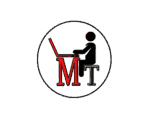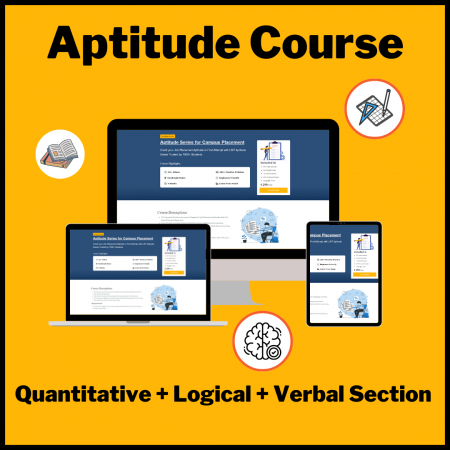Sem 5 Comps Bundle [ TCS + DWM + CN + SE ]
₹4,000.00
₹2,400.00
-
About the Coursse
-
Theoretical Computer Science
- 1. Introduction to Finite State Machine-002
- 2. Finite State Machine Problem No. 1-001
- 3. Finite State Machine Problem No. 2-003
- 4. Finite State Machine Problem No. 3-004
- 5. Introduction to Deterministic Finite Automata ( DFA )
- 6. Deterministic Finite Automata ( DFA ) Problem No. 1 ( Updated )
- 7. Deterministic Finite Automata ( DFA ) Problem No. 2
- 8. Deterministic Finite Automata ( DFA ) Problem No. 3
- 9. Deterministic Finite Automata ( DFA ) Problem No. 4
- 10. Regula Expression and Regular Language
- 11. Operations on Language
- 12. Regular Expression to Regular Language
- 13. Regular Language to Regular Expression
- 14. Understanding the flow
- 15. RE to NFA with Epselon Transition using Thompsons COnstruction Method
- 16. RE to NFA with Epselon transition using Thompson’s Construction Method ( Part 2 )
- 17. RLRE to Minimised DFA ( Direct Method )
- 18. RLRE to Minimised DFA ( Imp State Method )
- 19. Convert NFA with E-Transition to NFA without E-Transition
- 20. NFA Without E-Transition to DFA
- 21. Moore & Mealy Machine
- 22. Moore & Mealy Machine ( Problem 1 )
- 23. Introduction to Grammar
- 24. RE – RL to Context Free Grammar
- 25. How to Convert RE RL to Context Free Grammar
- 26. LMD RMD & Parse Tree
- 27. Check whether the given grammar is an ambiguous grammar or not
- 28. Elimination of useless variable
- 29. Elimination of Null Production
- 30. Elimination of unit Production
- 31. Simplification of CFG
- 32. Introduction to Chomsky Normal Form
- 33. CFG to CNF ( Problem No. 1 )-004
- 34. CFG to CNF ( Problem No. 2 )
- 35. CFG to CNF ( Problem No. 3 )-002
- 36. Introduction to Greibach Normal Form ( GNF )
- 37. Convert CFG to GNF ( Problem No. 1 )
- 38. Convert CFG to GNF ( Problem No. 2 )
- 39. Convert CFG to GNF ( Problem No. 3 )
- 40. Convert the following into CNF & GNF
- 41. Introduction to Push Down Automata
- 42. How to write commands in Push Down Automata
- 43. Push Down Automata ( Problem No. 1 )
- 44. Introduction to Turing Machine
- Halting Problem
- 45. Convert FA ( DFA ) to PDA
- 46. Convert CFG to PDA
- 47. Post Currospondance Problem ( PCP )
-
Theoretical Computer Science [Previously Asked Questions]
- DFA #1
- DFA #2
- DFA #3
- DFA #4
- DFA #5
- DFA #6
- Moore Machine Numerical
- Mealy Machine Numerical
- Pumping Lemma #1
- Pumping Lemma #2
- LMD and RMD Numerical
- Parse Tree & Grammar Ambiguity
- CFG TO GNF
- CFG to CNF with simplification
- Pushdown Automata – #1
- Pushdown Automata – #2
- Turing Machine – #1
- Turing Machine – #2
-
Theoretical Computer Science [Notes]:-
-
Software Engineering [Module 1]:- Introduction To Software Engineering and Process Models
-
Software Engineering [Module 2]:- Software Requirements Analysis and Modeling
-
Software Engineering [Module 3]:- Software Estimation Metrics
-
Software Engineering [Module 4]:- Software Design
-
Software Engineering [Module 5]:- Software Testing
-
Software Engineering [Module 6]:- Software Configuration Management, Quality Assurance and Maintenance
-
Software Engineering [Notes]:- Software Engineering Full Notes
-
Software Engineering [ Importance ] :-
-
Software Engineering [Viva Question]:-
-
Computer Network [Module 1]:- Introduction to Computer Networks
-
Computer Network [Module 2]:-Physical Layer
-
Computer Network [Module 3]:- Data Link layer
- Framing and it’s Methods
- Error Detection and its Methods
- Hamming Code
- Cyclic Redundancy Check Part [01]
- Cyclic Redundancy Check Part [02]
- Parity Checking and Checksum Error Detection
- Flow Control: Stop and Wait and Sliding Window Protocol
- Go Back- N ARQ System
- SDLC protocol
- HDLC protocol
- Carrier Sense Multiple Access-Collision Detection Procedure (CSMA-CD)
-
Computer Network [Module 4]:- Network Layer
-
Computer Network [Module 5]:- Transport Layer
-
Computer Network [Module 6]:- Application Layer
-
Computer Network [Notes]:- Data Warehousing Fundamentals
-
Computer Network [Notes]:- Physical Layer
-
Computer Network [Notes]:- Data Link Layer
-
Computer Network [Notes]:- Network Layer
-
Computer Network [Notes]:- Transport Layer
-
Computer Network [Notes]:- Application Layer
-
Computer Network [ Importance ] :-
-
Computer Network [Viva Questions]:-
-
Data Warehouse and Data Mining [Module 1]:- Data Warehousing Fundamentals
- Introduction to Data Warehouse
- Meta Data
- Data Mart
- Data Warehouse Architecture
- How to Draw Star , Smowflake and Fack Constelation Basics
- Numericals on Star , Snowflake and Fact Constelation [ Part 1 ]
- Numericals on Star , Snowflake and Fact Constelation [ Part 2 ]
- What is Olap Operations
- OLAP VS OLTP
- Extract Transform and Load (ETL)
-
Data Warehouse and Data Mining [Module 2]:- Introduction to Data Mining, Data Exploration
-
Data Warehouse and Data Mining [Module 3]:- Classification
-
Data Warehouse and Data Mining [Module 4]:- Clustering
- K Mean clustering with Example [ Type 1 ]
- K Mean clustering with Example [ Type 2 ]
- K Mean Numerical Solved Example [ May 2022 , May 2023 ] [ 10 Marks ] —
- K Medoid with Example
- Agglomerative Clustering Algorithm with Example
- Agglomerative Adjacency Matrix using Euclidean Distance with Solved Example
-
Data Warehouse and Data Mining [Module 5]:-Mining frequent patterns and associations
-
Data Warehouse and Data Mining [Module 6]:- Web Mining
-
Data Warehouse and Data Mining [Notes]:-
-
Data Warehouse and Data Mining [Viva Question]:-
-
Data Warehouse and Data Mining [ Importance ] :-



